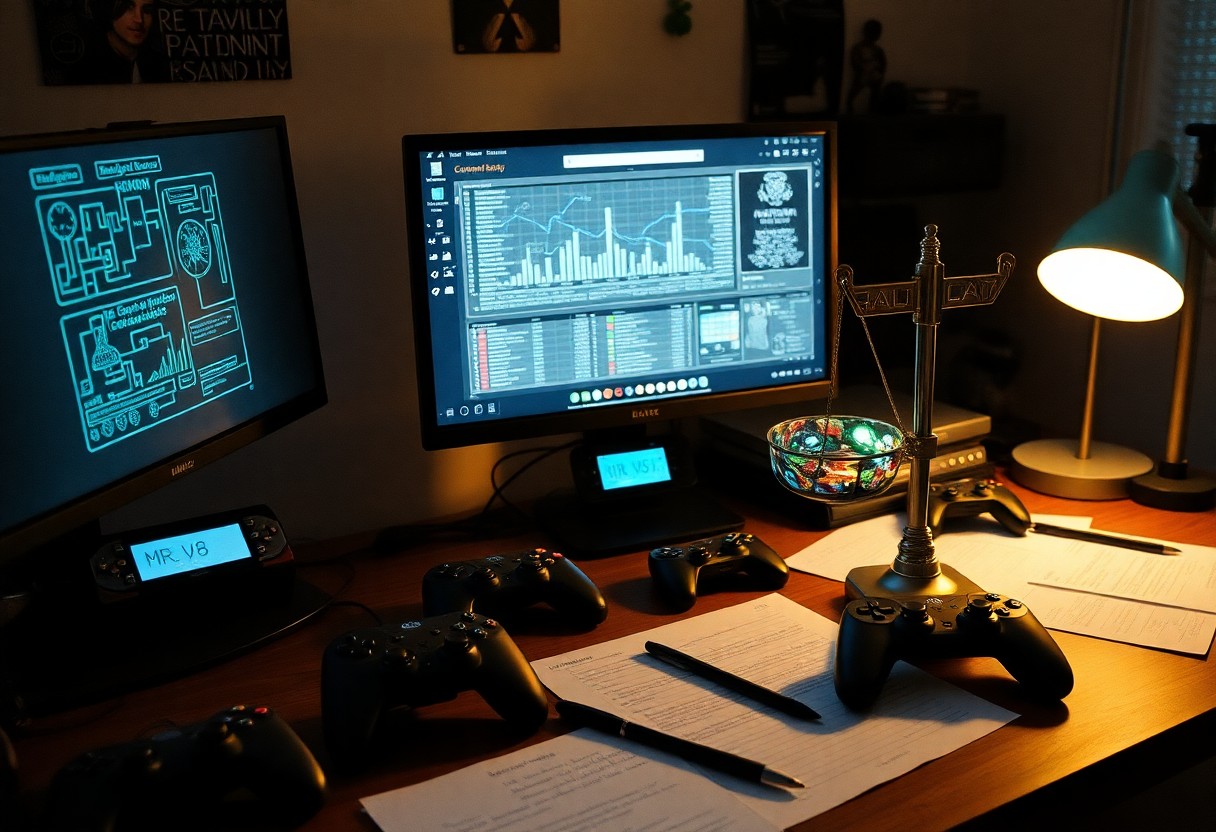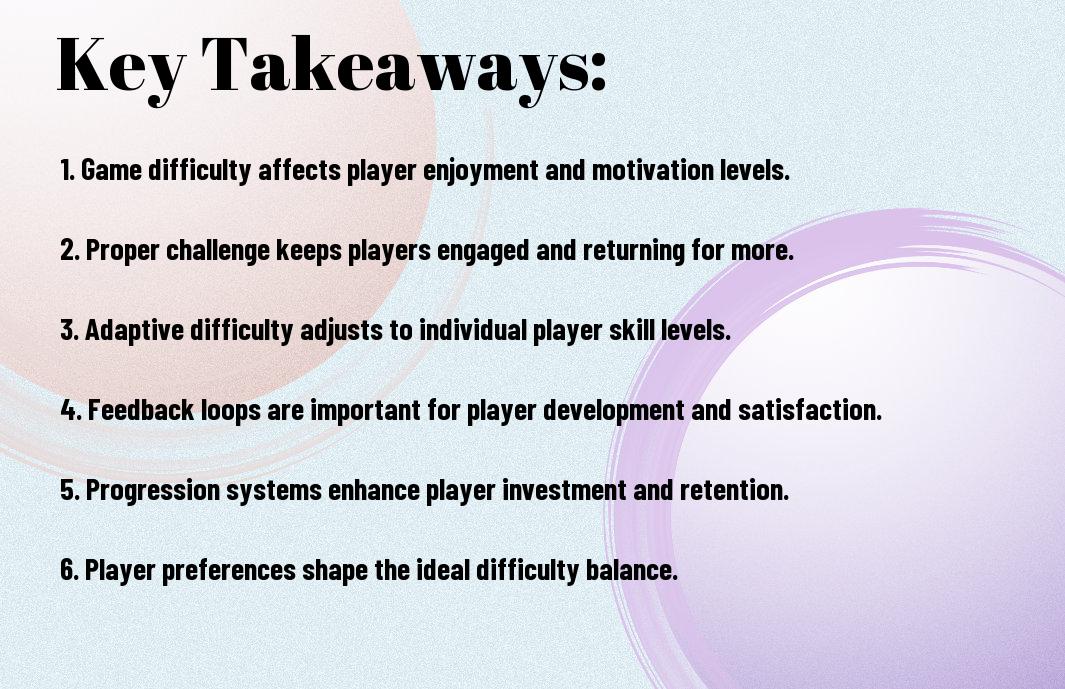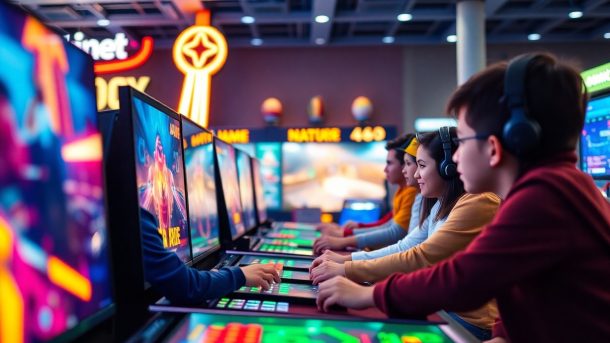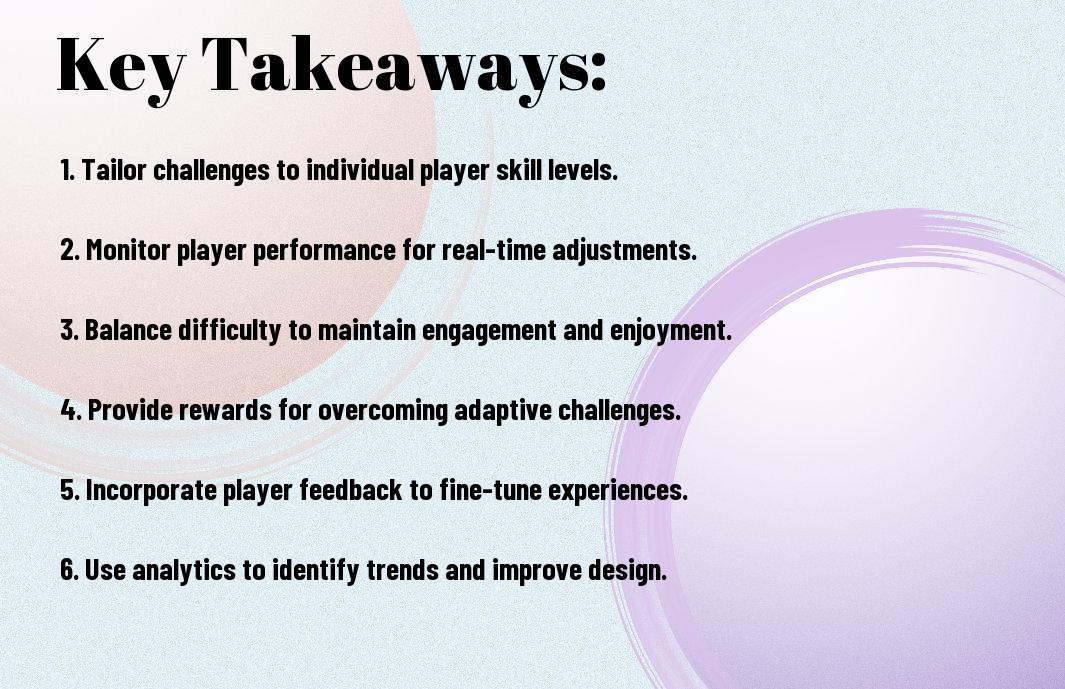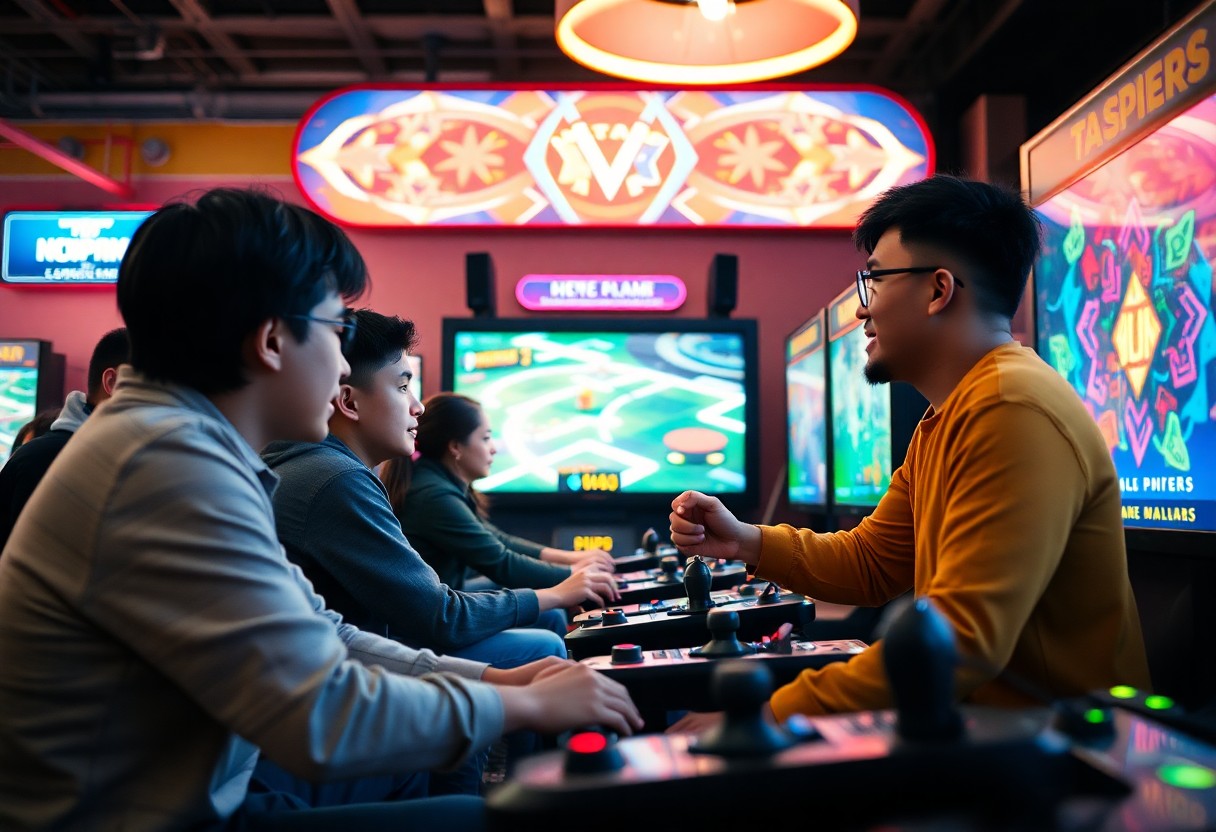As you probe into the world of gaming, you’ll notice that your experience is significantly impacted by the game’s difficulty level. You expect a challenge that’s engaging, yet not frustratingly impossible. This is where AI comes in, as it has the potential to revolutionize game difficulty by adapting to your skills and preferences, providing a unique experience tailored to your needs. You will explore how AI is transforming the gaming landscape in this blog post.
Key Takeaways:
- AI can analyze player behavior and adjust game difficulty in real-time, providing a more personalized and engaging experience for gamers.
- Machine learning algorithms can be used to create dynamic difficulty adjustment systems that adapt to individual players’ skills and preferences.
- AI-powered game development tools can help designers create more balanced and challenging levels, reducing the need for manual playtesting and iteration.
- AI-driven analytics can provide valuable insights into player behavior and preferences, helping game developers to identify areas for improvement and optimize game difficulty.
- AI can be used to generate new content, such as levels or enemies, that are tailored to a player’s skill level and playing style, increasing the game’s replay value.
- The use of AI in game development can enable the creation of more realistic and immersive game worlds, with AI-powered NPCs that can adapt to player actions and decisions.
- AI has the potential to revolutionize the way games are designed and played, enabling new forms of interactive storytelling and player engagement that are more responsive and dynamic than traditional games.
Traditional Game Difficulty Systems
While exploring the evolution of game difficulty, you’ll find that traditional systems have been largely static. You can learn more about the future of gaming by visiting Revolutionizing Gaming with AI: A Look into the Future to understand how AI is changing the landscape.
Static Difficulty Levels
With predefined difficulty levels, you experience a limited range of challenges, which can become repetitive and less engaging over time.
Manual Balancing Methods
Above all, manual balancing methods require extensive playtesting and tweaking to ensure an optimal experience, which can be time-consuming and costly.
It is through manual balancing methods that you can see the limitations of traditional game difficulty systems, as they often rely on trial and error, and may not account for individual player skills and preferences, leading to a less personalized experience.
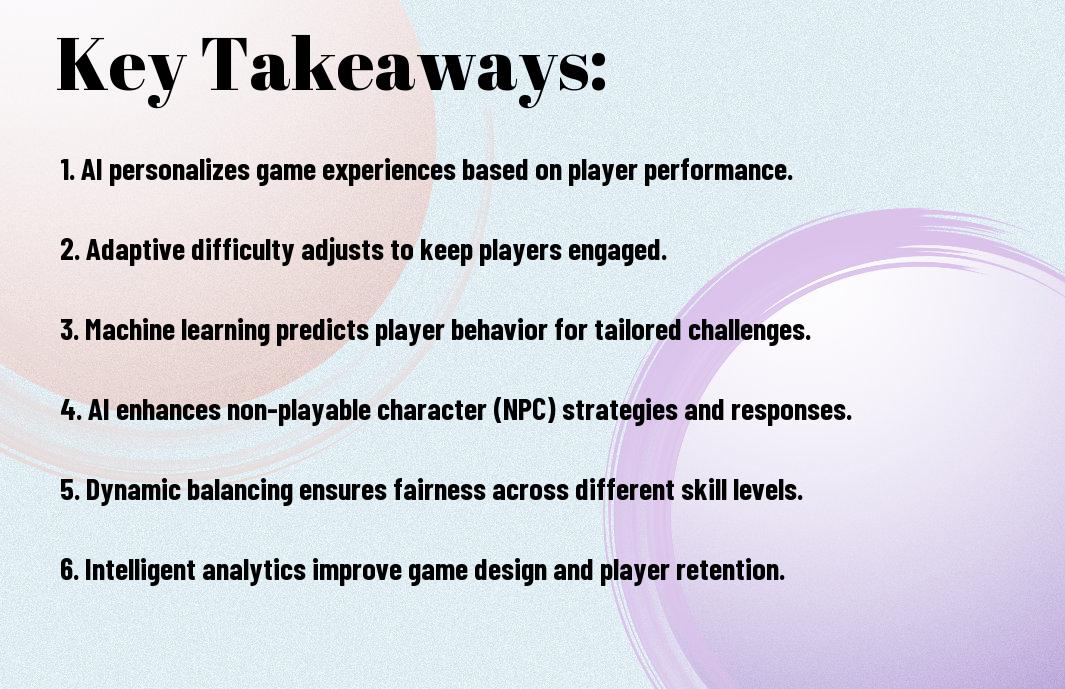
AI-Driven Dynamic Difficulty
If you’re looking to create a more immersive gaming experience, AI-driven dynamic difficulty is the way to go. You can adjust the difficulty level in real-time, making the game more engaging and challenging for players.
Real-time Player Analysis
Realistically, you need to assess player performance continuously to adjust the difficulty level. You can use AI to analyze player behavior, identifying strengths and weaknesses to create a more personalized experience.
Behavioral Pattern Recognition
Analytically, you can use AI to identify patterns in player behavior, such as decision-making and problem-solving. You can then use this information to adjust the game’s difficulty level, making it more suitable for your playing style.
For instance, as you play, the AI system can analyze your behavioral patterns, such as your reaction time, accuracy, and strategy. This information can be used to create a more dynamic and responsive game environment, where the difficulty level adjusts to your skills and abilities, keeping you engaged and motivated throughout the game.
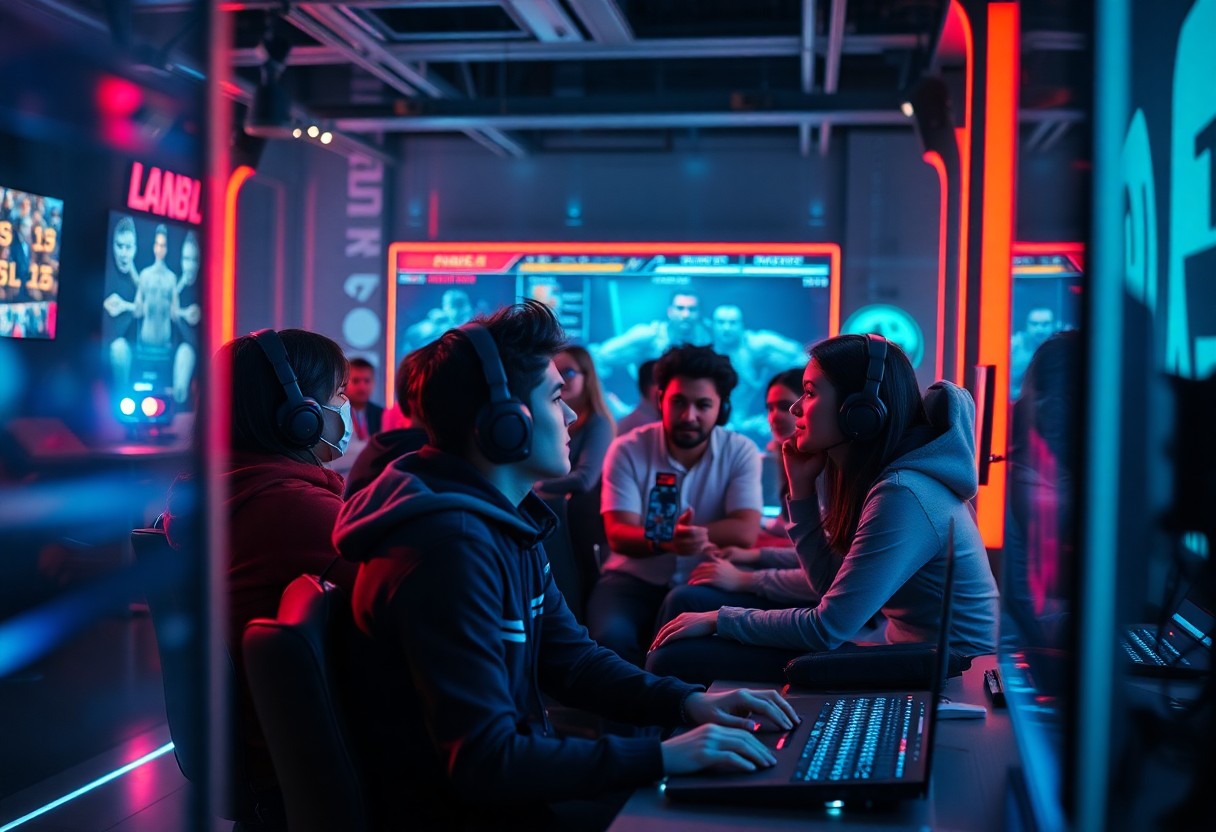
Machine Learning Applications
Unlike traditional methods, machine learning enables you to create dynamic game difficulty adjustment. You can learn more about The Role, Impact & Trends of AI in the Gaming Industry – Splore and its applications in game development.
Neural Networks in Game Adaptation
About the use of neural networks, you can utilize them to analyze your players’ behavior and adjust the game difficulty accordingly, providing a more personalized experience.
Predictive Difficulty Scaling
For instance, predictive difficulty scaling allows you to anticipate your players’ needs and adjust the game’s challenge level, ensuring an engaging experience.
The predictive difficulty scaling feature uses data and analytics to forecast your progress and preferences, enabling the game to adapt its difficulty in real-time, keeping you engaged and motivated throughout your gaming journey. You can leverage this technology to create a more immersive experience, tailored to your unique playing style and abilities.
Personalized Gaming Experience
For a long time, you’ve been looking for a gaming experience tailored to your skills. With AI, you can now enjoy games that adjust their difficulty in real-time, providing an optimal challenge.
Player Skill Profiling
Gamers like you will benefit from AI-driven profiling, which analyzes your behavior and adjusts the game accordingly, ensuring an engaging experience.
Adaptive Challenge Mechanisms
Between each level, you’ll notice the game adapting to your performance, adjusting difficulty to keep you engaged and motivated.
Hence, as you progress through the game, you’ll find that the adaptive challenge mechanisms will continue to evolve, introducing new obstacles and challenges that are tailored to your improving skills, keeping the game exciting and preventing it from becoming too easy or too difficult, allowing you to fully immerse yourself in the gaming experience.
Performance Optimization
After implementing AI in your game, you’ll notice significant improvements in overall performance, allowing for a more seamless gaming experience. You can expect enhanced frame rates, reduced lag, and optimized resource allocation, resulting in a more engaging and immersive experience for your players.
Resource Management
To effectively manage resources, you’ll need to consider how AI can help allocate system resources, such as CPU and memory, to ensure your game runs smoothly and efficiently, allowing you to focus on creating a more challenging and enjoyable experience for your players.
Response Time Calibration
Timing is everything when it comes to game difficulty, and you’ll find that AI can help calibrate response times to create a more realistic and responsive experience, allowing you to fine-tune your game’s difficulty level to suit your players’ skills and preferences.
Optimization of response time calibration is key to creating a truly immersive gaming experience, and you’ll find that AI can help you analyze player behavior and adjust response times accordingly, ensuring that your game is always challenging, yet never frustratingly difficult, and that you can make data-driven decisions to continually improve and refine your game’s difficulty level to keep your players engaged and coming back for more.
Future Implications
Your gaming experience is about to get a significant boost with AI-powered difficulty adjustment, and you can expect a more personalized and engaging experience in the future.
Evolution of Gaming Mechanics
Across various genres, AI will introduce new mechanics, making games more dynamic and challenging, and you will have to adapt to these changes to progress.
Player Engagement Enhancement
Among the benefits of AI-driven difficulty is increased player engagement, as you will face challenges tailored to your skills, keeping you motivated and interested in the game.
Also, with AI analyzing your gameplay, you can expect more realistic and responsive NPCs, enriching your overall gaming experience and providing you with a more immersive story, as you interact with characters that behave and react like real people, making your journey even more engaging and fun.
Summing up
To wrap up, you now understand how AI is revolutionizing game difficulty, offering you a personalized experience. Your gaming sessions will become more engaging as AI adapts to your skills, pushing your limits and enhancing your overall experience. You will enjoy a tailored challenge, making your gameplay more immersive and enjoyable, as AI continues to evolve and improve game difficulty adjustment.
FAQ
Q: What is the role of AI in game difficulty adjustment, and how does it impact the gaming experience?
A: AI plays a significant role in revolutionizing game difficulty by enabling dynamic adjustment of challenge levels based on individual player performance. Through machine learning algorithms, games can analyze player behavior, such as completion times, death rates, and puzzle-solving strategies, to modify the difficulty in real-time. This ensures that the game remains engaging and challenging, yet not overwhelmingly frustrating, thereby enhancing the overall gaming experience and encouraging players to continue playing.
Q: How does AI-driven game difficulty adaptation influence player engagement and retention rates?
A: AI-driven game difficulty adaptation has a profound impact on player engagement and retention rates. By providing an optimal level of challenge, AI-powered games can reduce player frustration and increase satisfaction, leading to longer play sessions and a higher likelihood of players completing the game. Additionally, AI-driven difficulty adjustment can help to identify and address skill gaps, allowing players to improve their skills and build confidence, which in turn boosts engagement and motivates players to continue playing and exploring the game’s content.
Q: Can AI-generated game content, such as levels or enemies, further enhance the gaming experience by offering virtually endless variety and challenge?
A: Yes, AI-generated game content has the potential to significantly enhance the gaming experience by providing virtually endless variety and challenge. Through procedural generation techniques, AI algorithms can create unique levels, enemies, and game scenarios on the fly, ensuring that each player’s experience is distinct and unpredictable. This not only adds replay value to the game but also enables developers to create games with potentially infinite content, reducing the need for manual level design and testing, and allowing players to enjoy a fresh and exciting experience with each new playthrough.


